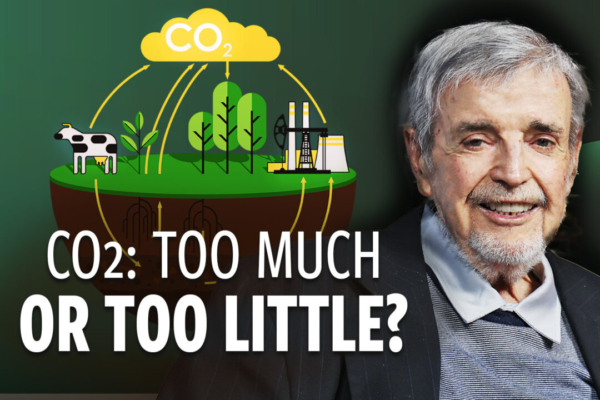In a recent episode of EpochTV’s “Bay Area Innovators” program, nuclear scientist Digby Macdonald stated that carbon dioxide (CO2) is not the primary cause of global warming. He explained that it is the rise in temperature that leads to an increase in CO2 concentration. Using the analogy of carbonated drinks, he likened it to how warmer temperatures cause the rapid release of CO2, resulting in fewer bubbles, just like putting beer in the fridge to maintain its carbonation.
Macdonald pointed out that one of the factors contributing to climate change is the Milankovitch cycle, referring to variations in Earth’s elliptical orbit around the sun. When Earth’s orbit is at its most elliptical every 100,000 years, leading to periods where the Earth is farther from the sun, it results in ice ages due to significantly reduced solar radiation and heat.
He emphasized that this cycle, combined with Earth’s oscillations and solar activity, is the primary driver of climate change. Macdonald noted that throughout history, there have been peaks and troughs in temperatures, citing the Roman era as a period of higher temperatures, approximately 2 to 4 degrees higher than today, marked by significant advancements in civilization.
According to Macdonald, the current global temperature is only about a quarter of the way between historical lows and highs. He stated that we are still at relatively low temperatures and there is a long way to go in terms of temperature increase, with minimal changes, such as a fraction of a degree Celsius.
Macdonald highlighted that analyzing gas bubbles trapped in polar ice cores through spectrometry provides insights into past CO2 concentrations, while temperature levels can be determined from isotope distribution. By studying these data, scientists can establish the relationship between CO2 levels and corresponding temperatures thousands of years ago.
He pointed out historical evidence, noting that during the “Little Ice Age,” people were ice skating on the Thames in London over a hundred years ago, indicating significantly lower temperatures at that time. Macdonald emphasized that the current period signifies a natural warm-up from the Little Ice Age, where temperatures are expected to rise without direct correlation to CO2 levels.
Macdonald criticized initiatives attributing climate change solely to CO2, suggesting that such efforts are driven by political motives. He argued that resources allocated to tackling climate change would be better spent addressing urgent social issues such as healthcare and homelessness.
The scientist also disagreed with reports from the Intergovernmental Panel on Climate Change (IPCC), which attribute CO2 as the primary driver of climate change without examining causation properly. Macdonald’s research indicates that temperature increases precede rises in CO2 levels, with water vapor being the key atmospheric gas maintaining Earth’s warmth, while CO2, methane, and nitrous oxides have minimal impact.
Engaging with the “CO2 Coalition,” Macdonald aims to advocate for factual information about the essential role of CO2 in the environment, highlighting limitations in climate models and potential consequences of enforced CO2 reductions. The coalition comprises members from various fields such as geologists, chemists, and physicists, including Nobel laureate John Clauser and renowned physicist William Happer serving as the chairman.
Macdonald mentioned that the CO2 Coalition has launched educational programs for K-12 students to provide a balanced perspective on CO2’s role in the environment. He emphasized the diversity of weather patterns globally and the varying climates within short distances, urging policymakers to reconsider their approaches to climate change. Macdonald warned against excessively low CO2 levels, which could hinder plant growth and lead to widespread hunger and poverty.

